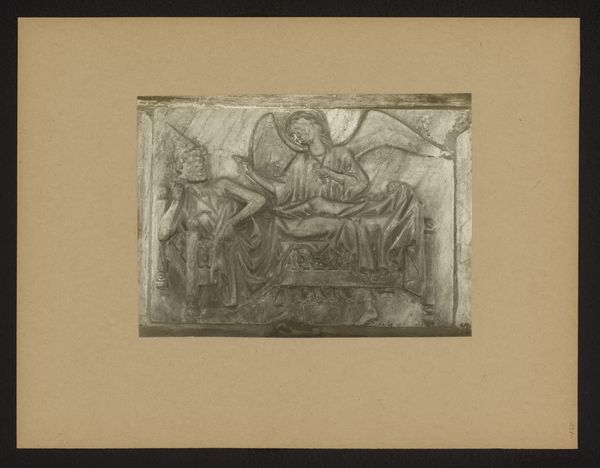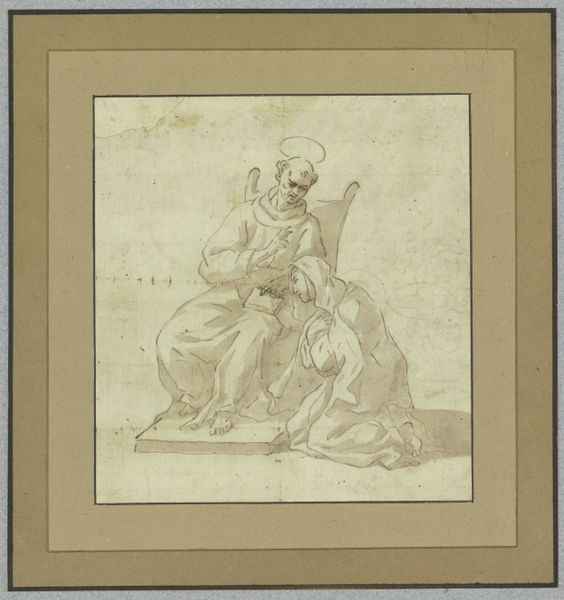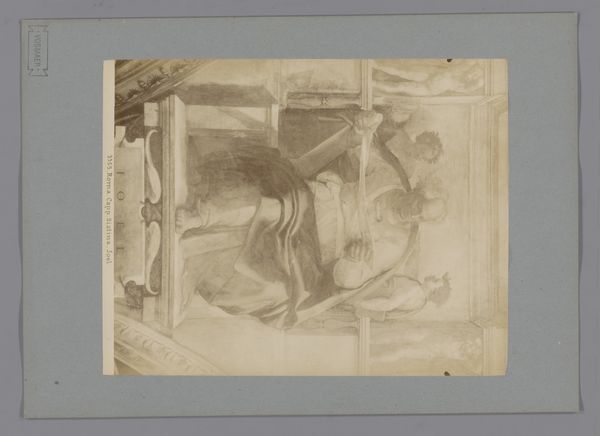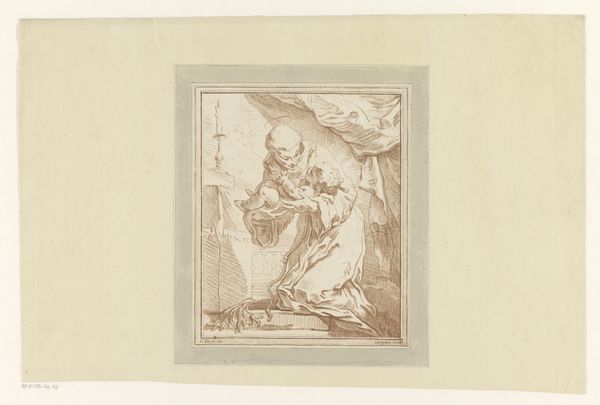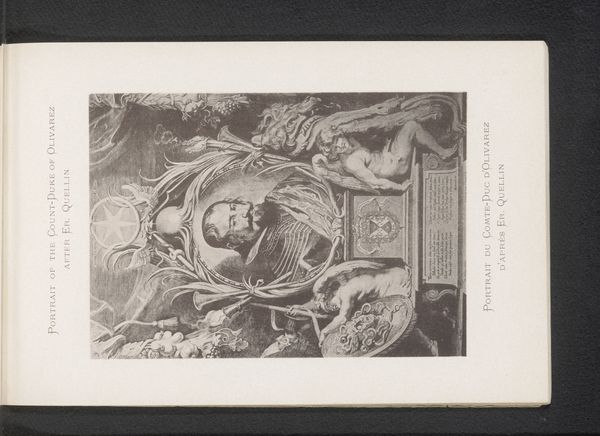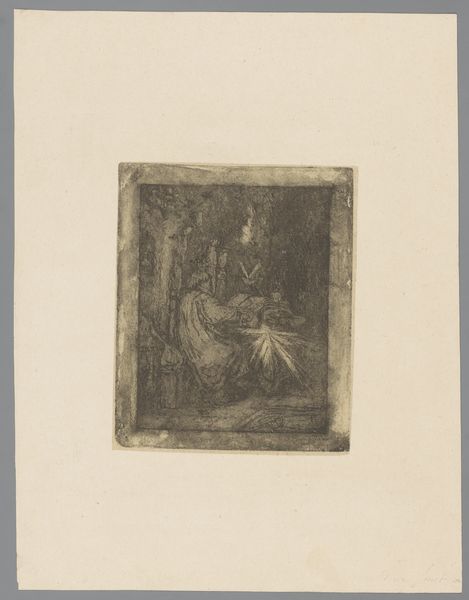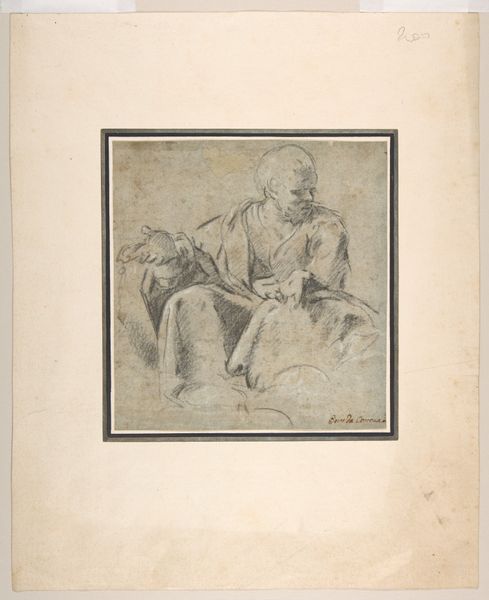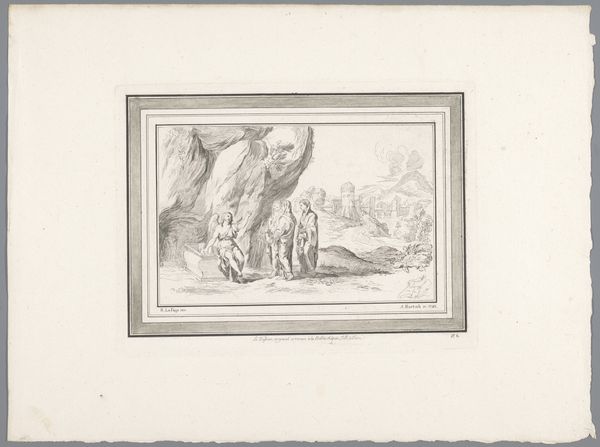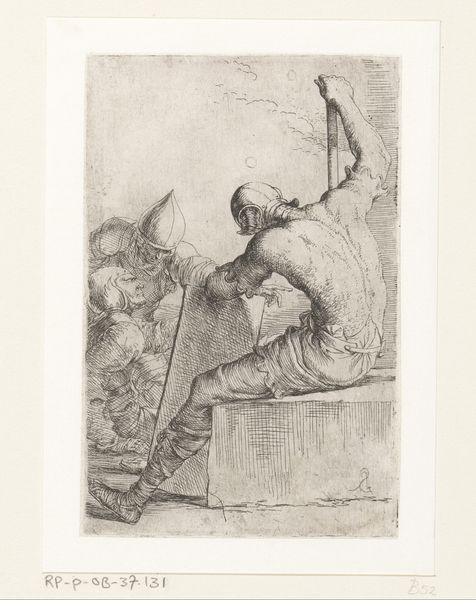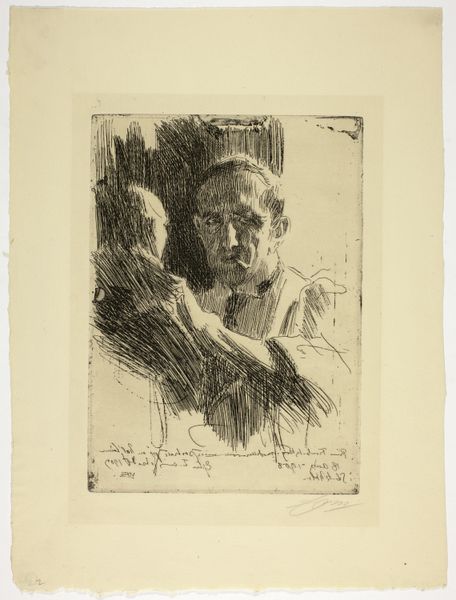
relief, sculpture, marble
#
byzantine-art
#
medieval
#
relief
#
figuration
#
sculpture
#
history-painting
#
marble
Dimensions: height 149 mm, width 201 mm
Copyright: Rijks Museum: Open Domain
Curator: This marble relief, "Detail van de tombe van paus Clemens II in de dom van Bamberg," dates from somewhere around 1900 to 1920. It appears to be after a medieval original, perhaps Byzantine in style. The subject seems to be a figure holding a symbolic lamb. What strikes you when you first see this relief? Editor: The immediate feeling is one of stark power combined with vulnerability. The figure is clearly authoritative, possibly divine, with the symbols of office or faith. But the lamb is visually prominent and evokes a strong emotional reaction. Is that the "Agnus Dei," the Lamb of God? Curator: Yes, the lamb is a clear reference to the Agnus Dei. Carried as an emblem, the imagery is referencing the idea of sacrifice and purity, deeply connected to the papacy and broader themes of redemption. But consider the location: Bamberg Cathedral. Tombs aren't merely resting places. They are statements of power, lineage, and eternal legacy. Editor: Absolutely. Placed within the historical context, this raises many interesting questions about power structures of the church and how historical narratives of the papacy have been presented, constructed, and even challenged over time. The subject almost sits on a throne with symbols around him which all speak to domination, protection and peace. Curator: The interesting aspect here is how this image, likely a late 19th- or early 20th-century depiction, attempts to represent an older, medieval power structure. The church sought ways to constantly restate their eternal presence by associating themselves with history. Editor: It makes one think about the role of the Church across various social, political and cultural periods, its historical implications in art history and current affairs as well as thinking through representation, interpretation and power, all of which shape society even today. It also gives space to discuss social inequalities that are shaped by political figures. Curator: Precisely. This relief serves not just as a commemoration but also as an idealised image of religious authority meant for a contemporary audience in the early 20th century that the Church wished to propagate. Editor: Examining this historical reproduction critically allows us to question the church’s past and present cultural impact. It’s vital to approach historical artifacts like this with an informed, socially aware lens.
Comments
No comments
Be the first to comment and join the conversation on the ultimate creative platform.
